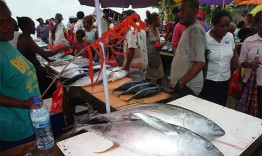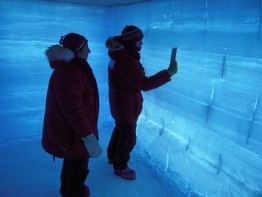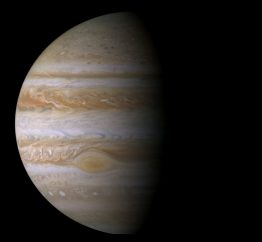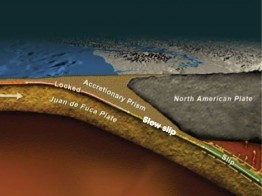A team of researchers, including Edward Allison from the College of the Environment’s School of Marine and Environmental Affairs, has evaluated fishery improvement projects designed to bring seafood from wild fisheries to the certified market while promising sustainability in the future. In a policy paper appearing May 1 in Science, the team concluded that these projects need to be fine tuned to ensure that fisheries are delivering on their promises.
Read more at UW Today »Antarctic ice core shows northern trigger for ice age climate shifts
University of Washington scientists in the Department of Earth and Space Sciences were part of a multi-institutional research team that has discovered a consistent link between abrupt temperature changes in Greenland and Antarctica during the most recent ice age. Using evidence trapped in ice cores from the West Antarctica Ice Sheet, the team from UW used analyses of oxygen molecules in the ice to uncover precise records of Antarctica’s temperature history.
Read more at UW Today »Exploring Earth's final frontier
Covering more than 70 percent of Earth’s surface, the oceans act as our planet’s heartbeat, with differences in depths, currents, temperature and salinity marking changes in its pulse. While these measurements are fairly straightforward, the information they relay about Earth’s health is much more complex. As the planet warms, much of the heat is absorbed in the oceans, resulting in rising sea levels and changes to how water mixes and currents move.
Read more on the UW homepage »Firn aquifers, habitat restoration in the Columbia Basin, and more: April 27 weekly published research
Each week we share the latest peer-reviewed publications coming from the College of the Environment. Over the past week, thirteen new articles co-authored by members of the College of the Environment were added to the Web of Science database, including studies on sharks, clouds, and a 1500-meter ice core Read on!
Read more »Tidal tugs on Teflon faults drive slow-slipping earthquakes
Unknown to most people, the Pacific Northwest experiences a magnitude-6.6 earthquake about once a year. The reason nobody notices is that the movement happens slowly and deep underground, in a part of the fault whose behavior, known as slow-slip, was only recently discovered. A University of Washington seismologist who studies slow-slip quakes has looked at how they respond to tidal forces from celestial bodies and used the result to make a first direct calculation of friction deep on the fault.
Read more at UW Today »





